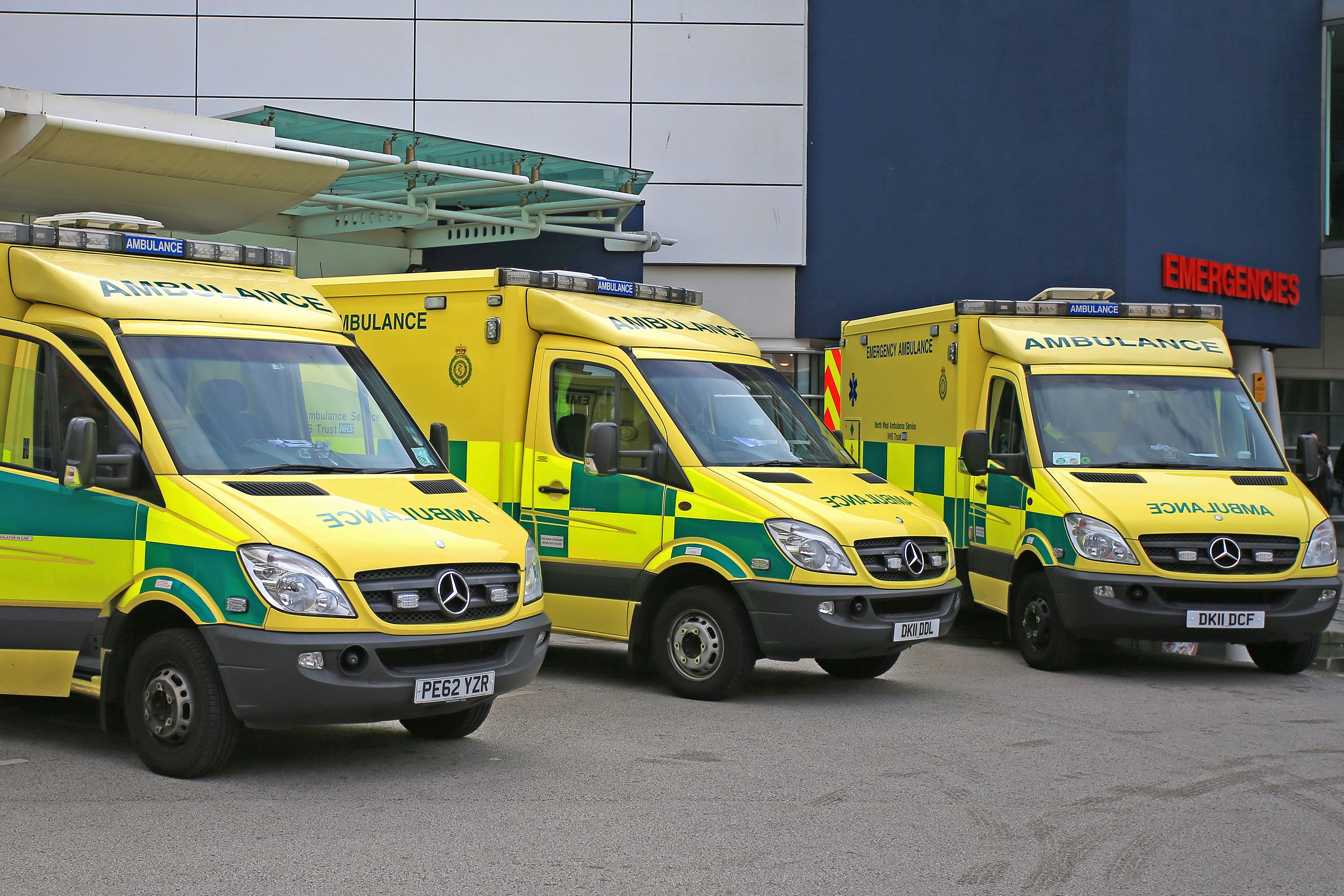A&E just as effective as specialist centres for cardiac arrest – study
Taking patients whose hearts have stopped to a specialist centre rather than the nearest emergency department may be unnecessary, research suggests.

Your support helps us to tell the story
From reproductive rights to climate change to Big Tech, The Independent is on the ground when the story is developing. Whether it's investigating the financials of Elon Musk's pro-Trump PAC or producing our latest documentary, 'The A Word', which shines a light on the American women fighting for reproductive rights, we know how important it is to parse out the facts from the messaging.
At such a critical moment in US history, we need reporters on the ground. Your donation allows us to keep sending journalists to speak to both sides of the story.
The Independent is trusted by Americans across the entire political spectrum. And unlike many other quality news outlets, we choose not to lock Americans out of our reporting and analysis with paywalls. We believe quality journalism should be available to everyone, paid for by those who can afford it.
Your support makes all the difference.Ambulances should take patients whose hearts have stopped to the closest emergency department rather than to a specialist centre, a study has revealed.
A randomised trial carried out in the UK found no difference in the survival of resuscitated patients taken by ambulance to a specialist cardiac arrest centre compared with those delivered to the geographically closest emergency department.
Cardiac arrest centres provide targeted critical care beyond what is available in conventional emergency departments.
If delivering these patients to such centres to receive multiple interventions does not improve overall survival, then these resources are better allocated elsewhere
Patients suffering from a heart attack, however, should still be taken to the centres, researchers concluded, because they will need specialist care.
A cardiac arrest is when the heart stops pumping blood, while a heart attack is when an artery becomes blocked.
Previous data from non-randomised studies suggested there was a better survival rate when treating cardiac arrest victims at these centres, and there is a strong drive internationally to do so.
But new research, funded by the British Heart Foundation and presented to the European Society of Cardiology (ESC) Congress in Amsterdam, found no difference in the survival rates of patients treated in them.
Study author Dr Tiffany Patterson of Guy’s and St Thomas’ NHS Foundation Trust, London, UK said resources could be “better allocated elsewhere” if there is no benefit to bringing cardiac arrest patients.
Sudden cardiac arrest causes one in five deaths in industrialised countries.
A randomised trial involving all hospitals in London carried out between January 2018 and December 2022 looked at the survival rates of 862 patients after 30 days.
Of those, 431 were randomly assigned by London Ambulance Service paramedics to be transferred to a cardiac arrest centre, while the other 431 remained in standard care.
There are 32 emergency departments in London, and seven cardiac arrest centres.
The study found exactly the same number of patients from both groups had died within 30 days, 258 (63%).
The results of the study open the door to suggestions medical resources should be directed elsewhere, as cardiac arrest victims are just as likely to survive in normal emergency departments.
This first-of-its-kind trial answers this important practical question and suggests that it does not make a difference to patients surviving longer term
Dr Patterson said: “This study does not support transportation of all patients to a cardiac arrest centre following resuscitated cardiac arrest.
“Cardiac arrest centres are heavily resourced hospitals.
“If delivering these patients to such centres to receive multiple interventions does not improve overall survival, then these resources are better allocated elsewhere.
“Furthermore, if cardiac arrest patients are not taken to such hospitals, this frees up space for other emergency work that requires high-dependency beds and the specialist input provided by these centres.”
Professor Simon Redwood, also of Guy’s and St Thomas’ said the benefit of taking patients to an emergency department rather than to a specialist centre was likely to be even more pertinent in rural areas where ambulance transfer times are longer.
He continued: “Patients are better off going to the nearest emergency department.
“If it was in a rural situation where perhaps the transfer times could be much longer to get to a cardiac arrest centre, I imagine that would make the results even worse for the cardiac arrest centre.”
Professor Sir Nilesh Samani, medical director of the British Heart Foundation, said: “There are more than 30,000 out-of-hospital cardiac arrests in the UK each year, but the survival rate remains stubbornly low at less than one in 10.
“The question of whether taking out-of-hospital cardiac arrest patients who are successfully resuscitated directly to a heart attack centre rather than to their nearest emergency department has long been debated.
“This first-of-its-kind trial answers this important practical question and suggests that it does not make a difference to patients surviving longer term.”